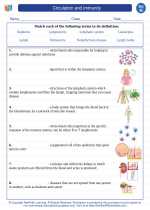Mayan Civilizations
The Mayan civilization was a Mesoamerican civilization that developed in the region that is now southeastern Mexico, Belize, Guatemala, and western Honduras. The civilization is known for its advanced knowledge of astronomy, mathematics, architecture, and art. The Mayans are also famous for their elaborate and accurate calendar system, as well as their impressive city-states and ceremonial centers.
Key Aspects of Mayan Civilization
- City-States: The Mayans built numerous city-states, each with its own ruler and government. These city-states were often at war with each other but also engaged in trade and alliances.
- Architecture: Mayan architecture is characterized by its impressive pyramids, temples, and palaces. The city of Tikal in Guatemala and the pyramid of El Castillo at Chichen Itza are famous examples of Mayan architecture.
- Writing and Hieroglyphics: The Mayans developed a complex writing system using hieroglyphics, which has been partially deciphered by scholars.
- Calendar System: The Mayans had a highly sophisticated calendar system, consisting of both a solar calendar and a sacred calendar. Their calendar accurately measured time and celestial events.
- Agriculture: The Mayans were skilled farmers and developed advanced agricultural techniques, including the use of terracing and irrigation.
- Mathematics and Astronomy: Mayan scholars made significant advancements in mathematics, including the concept of zero. They also studied the movements of celestial bodies and developed a complex understanding of astronomy.
Study Guide
If you're studying the Mayan civilizations, here are some key points to focus on:
- Describe the organization of Mayan city-states and the role of rulers within these city-states.
- Explain the significance of Mayan architecture, including the purpose of pyramids and temples.
- Discuss the Mayan writing system and its importance in understanding Mayan history and culture.
- Explore the Mayan calendar system and its complexity, including the different cycles and their uses.
- Investigate the agricultural practices of the Mayans and how they sustained their civilization.
- Examine the contributions of the Mayans to mathematics and astronomy, including their understanding of zero and their astronomical observations.
By focusing on these key aspects, you will gain a comprehensive understanding of the fascinating Mayan civilization and its enduring legacy.
.◂Science Worksheets and Study Guides Eighth Grade. Circulation and immunity
Study Guide Circulation and immunity
Circulation and immunity  Worksheet/Answer key
Worksheet/Answer key Circulation and immunity
Circulation and immunity  Worksheet/Answer key
Worksheet/Answer key Circulation and immunity
Circulation and immunity  Worksheet/Answer key
Worksheet/Answer key Circulation and immunity
Circulation and immunity  Vocabulary/Answer key
Vocabulary/Answer key Circulation and immunity
Circulation and immunity  Vocabulary/Answer key
Vocabulary/Answer key Circulation and immunity
Circulation and immunity  Vocabulary/Answer key
Vocabulary/Answer key Circulation and immunity
Circulation and immunity  Vocabulary/Answer key
Vocabulary/Answer key Circulation and immunity
Circulation and immunity  Vocabulary/Answer key
Vocabulary/Answer key Circulation and immunity
Circulation and immunity  Vocabulary/Answer key
Vocabulary/Answer key Circulation and immunity
Circulation and immunity  Vocabulary/Answer key
Vocabulary/Answer key Circulation and immunity
Circulation and immunity 

 Worksheet/Answer key
Worksheet/Answer key
 Worksheet/Answer key
Worksheet/Answer key
 Worksheet/Answer key
Worksheet/Answer key
 Vocabulary/Answer key
Vocabulary/Answer key
 Vocabulary/Answer key
Vocabulary/Answer key
 Vocabulary/Answer key
Vocabulary/Answer key
 Vocabulary/Answer key
Vocabulary/Answer key
 Vocabulary/Answer key
Vocabulary/Answer key
 Vocabulary/Answer key
Vocabulary/Answer key
 Vocabulary/Answer key
Vocabulary/Answer key
